Home »
Misc »
How to play 3v3 basketball
How to play 3v3 basketball
3-on-3 Basketball Plays to Score Easy Points (5 Plays)
Playing 3-on-3 is a great way to learn HOW to play basketball.
And in today’s world, there are more opportunities to play it than ever before!
You can play 3-on-3 at school with a few friends…
You can sign up to one of the many 3-on-3 tournaments that are popping up everywhere…
And, if you’ve got a smart basketball coach, you’re probably playing many small-sided games (like 3-on-3) already during team practices.
But regardless of where you’re playing, I bet you want to give your team the best chance to win.
Am I right?
To help you with that, I’m going to show you five 3-on-3 basketball plays that you can take to the court and use to help your team get wide open shots and layups.
Let’s get started...
1.
Pick and RollOverview of the Play:
Two players use a pick-and-roll from the top of the key or on the wing.
Instructions:
Setup: One player starts at the top of the key, and one player on each of the wings.![]()
- Player at the top of the key starts with the basketball.
- A player on the wing moves to set the pick-and-roll for the ball handler.
- The ball handler looks for scoring opportunities out of the pick-and-roll play, with the screener rolling towards the basket.
Coaching Points:
- If the defenders switch on the pick-and-roll, try to use any advantage you have on the mismatches that open up.
- If the defender guarding weak-side wing player moves to help on the roll, there could be a possibility for a pass to the wing or corner for the 3-point shot.
- The screener can choose to “slip” which could result in a pass and layup or pass and outside shot.
2.
Double BackOverview of the Play:
This 3-on-3 basketball play involves multiple back screens in an attempt to get an open layup for a player under the basket. If they’re not open, post up opportunities will be.
Instructions:
Setup: One player starts at the top of the key with the basketball, and one player on each wing.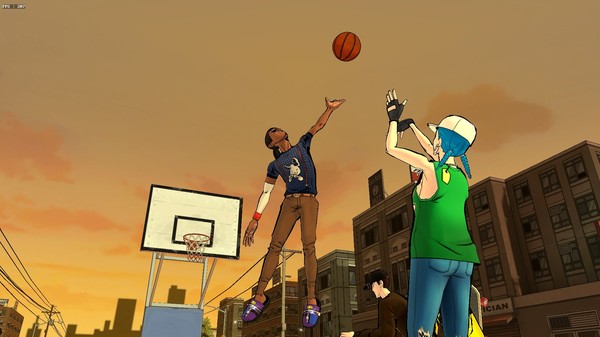
- 1 chooses the side to start the play by dribbling towards one of the wings.
- The player on the ball-side wing (2) cuts towards the opposite side to set the back screen for 3.
- 3 cuts to the basket off the back screen looking to receive a pass and finish if possible, while 2 pops out to the top of the key to receive the pass for a potential shot.
- If the pass inside for a layup or post up isn’t a good option, 1 passes to 2 at the top of the key.
- After making the pass, 1 receives a back screen from 3 and cuts under the rim to catch the basketball for an open layup.
Coaching Points:
- Two players involved in the screen must watch the basketball at all times and look to exploit any advantages that might occur, either off the screen or after a mismatch.
- Shot selection is crucial. The players must be patient, read what the best shot is, and be willing to pass up an ‘okay’ shot for a ‘great’ shot.
- If the second layup or post up isn’t open, 1 can pop out to the wing and isolate the bigger opponent or the team can run a pick and roll.

3.
Pin and PickOverview of the Play:
Wing players cut towards the paint and exchange sides on a cross screen. The screener will look to seal and receive a pass inside while the player receiving the screen will pop out to the perimeter. If the pass inside isn’t open, the ball is passed to the wing for a pick-and-roll.
Instructions:
Setup: One player starts at the top of the key with the ball, and one player on each wing.
- With 1 in possession of the basketball at the top of the key, wing players (2 and 3) cut towards the low blocks.
- 3 screens for 2 under the hoop and then attempts to seal 2’s defender.
- At the same time, 2 reads the defense and cuts out to the wing.
- If the pass to 3 isn’t open, 1 passes to 2 and then sprints down to set a pick-and-roll on the wing while 3 clears out to the weak-side of the floor.
Coaching Points:
- The first passing option 1 should be looking at is the pass inside to 3.
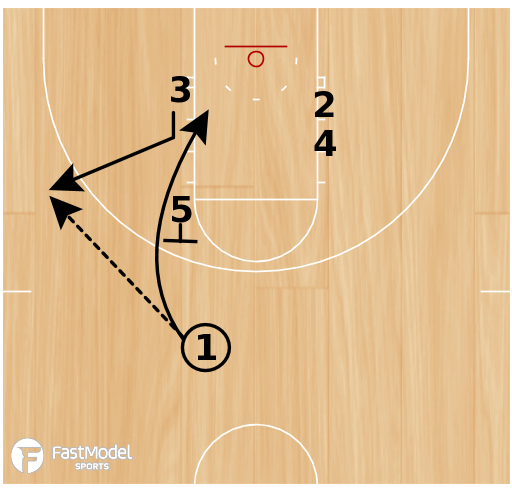
- 2 can cut outside to either wing depending on how the defense plays the cross screen.
- Make sure 1 is setting a strong screen in the pick-and-roll. Ball handlers aren’t often asked to screen, so some of their screens can be weak or easy to dodge.
4.
Give and Go, Cross ScreenOverview of the Play:
Two players use a give and go action to start the play. If there isn’t an opportunity for the pass on the cut, the cutter continues and sets a cross screen on the opposite side of the floor.
Instructions:
Setup: One player starts at the top of the key, and one player on each of the wings.
- A player at the top of the key (1) starts the play with a pass to the wing player (2).
- After passing the basketball, 1 cuts towards the basket attempting to execute a give-and-go play.
- If there aren’t any opportunities for a pass and finish, 1 turns to set the cross screen for the player on the weak side wing (3).

- 3 cuts off the back screen towards the basket to receive the pass and finish with a layup.
- At the same time, 1 attempts to seal 3’s defender on the screen, and could be open for a pass and finish if 2’s defender denies the pass to 3.
Coaching Points:
- 2 must wait for a good opportunity to make the pass.
- 1 must set a strong screen and seal the defender before opening up for the pass.
- 3 must cut hard towards the basket, and if there’s no opportunity for the pass and finish, must clear the paint to create space for the pass to 2.
5.
Ram ScreenOverview of the Play:
This is one of the most effective 3-on-3 basketball plays and involves a ram screen to create opportunities out of a pick-and-roll.
Instructions:
Setup: One player starts at the top of the key with the basketball, and one player on each wing.
- 1 starts with the basketball at the top of the key.
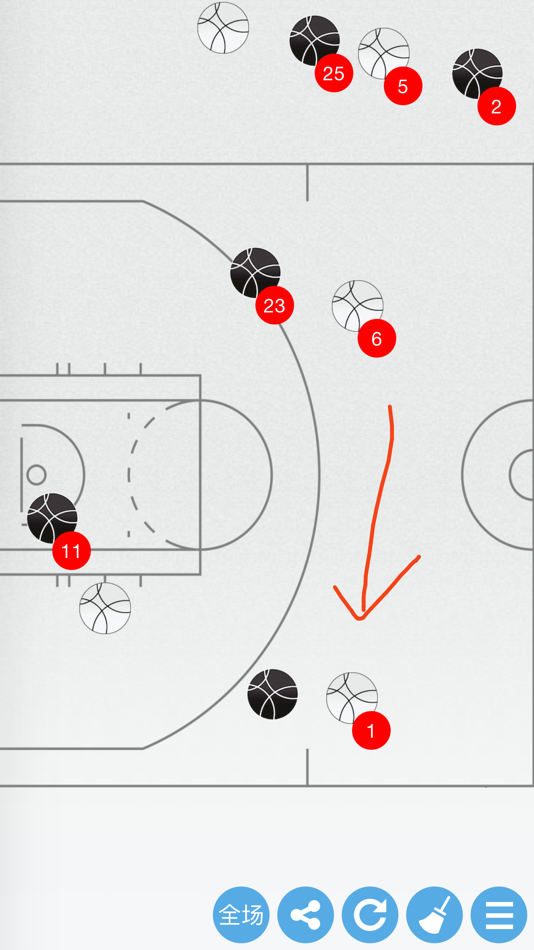
- 2 and 3 cut towards the middle of the floor, with 3 cutting towards the low block while 2 cuts to the free-throw line.
- 2 turns and sets a screen for 3 on the low block and then clears outside towards the corner or wing after the screen.
- 3 cuts off the screen and sprints towards the top of the key to set the pick-and-roll for 1.
- 1 looks to create scoring opportunities out of the pick-and-roll, while 3 can roll towards the basket or pop out for a three-point shot.
Coaching Points:
- The ball should be in the hands of the team’s best creator.
- The purpose of the off-ball screen (ram screen) is to slow down the screener’s defender and make it difficult for them to provide help or switch the pick and roll.
- Which is why it’s important for 3 to sprint to set the screen in order to create separation.
- If the defenders do manage to switch on the pick-and-roll, use any advantage that comes from the mismatches created.
Best Plays to Know For 3-ON-3 Basketball
| 3/18/2020 0 Comments Do you and your team want to compete at the Nike Basketball 3ON3 Tournament next year? You need to learn some plays and we’ve got you covered! Whether you’re a beginner or an expert, below are some of the best and most effective plays for a 3-on-3 basketball tournament. Pick and Roll This play involves two players using a pick-and-roll from the top of the key or on the wing. A pick-and-roll involves an offensive player setting a screen for a teammate that is in possession of the ball. Setup: Player 1 starts on the top of the key (the topmost point of the arched line that connects both sides of the free throw line) and players 2 and 3 stand on each of the wings. - Player 1 starts with the basketball at the top of the key
- Either player 2 or player 3 moves to set the pick-and-roll for the player who is the ball handler
- The ball handler then looks for scoring opportunities out of the pick-and-roll play, with the screener moving towards the basket
The Ram Screen This play creates opportunities out of a pick-and-roll and is deemed as one of the most effective 3-on-3 basketball plays. Setup: Player 1 starts on the top of the key and players 2 and 3 stand on each of the wings. - Player 1 starts with basketball at the top of the key. Players 2 and 3 cut to the middle of the court with player 3 cutting towards the low block. Then player 2 cuts towards the free throw line
- Player 2 then turns and sets a screen for player 3 on the low block and clears towards a corner or towards the wing after the screen
- Player 3 cuts off the screen and sprints towards the top of the key to set the pick and roll for player 1
- Player 1 then looks for a scoring opportunity while player 3 goes towards the basket or tries to make a three-point shot
The Give and Go This is an offensive play where a player passes the ball to a teammate and cuts towards the basket, breaking free from the defender, and looks for a return pass from his teammate for an opportunity to score. Setup: Player 1 starts at the top of the key and players 2 and 3 stand on each of the wings. - Player 1 starts the play by passing it to player 2
- After the ball is passed, player 1 cuts towards the basket
- If there is no opportunity for a pass and finish, player 1 then turns to set the cross screen for player 3
- Player 3 then cuts off the back screen and moves towards the basket to receive a pass and finish with a layup
- While this is happening, player 1 will attempt to cover player 3’s defender on the screen, allowing an opportunity for a pass and finish if player 2’s defender blocks the pass to player 3
The Double Back Screen This play consists of multiple back screens to attempt to get an open layup under the basket. In a back screen, also known as a blind screen, the screener sets a screen behind the defender. In a back screen, also known as a blind screen, the screener sets a screen behind the defender. Setup: Player 1 starts at the top of the key and players 2 and 3 stand on each of the wings. - Player 1 chooses which side to start the play by dribbling towards one of the wings
- The player that is on the ball side wing, such as player 2, will cut towards the opposite side to set the back screen for player 3
- Player 3 then cuts to the basket off the back screen, looking to receive a pass, and scores if possible while player 2 goes to the top of the key to receive a pass for a potential shot
- If the pass isn’t a good one, player 1 will then pass to player 2 at the top of the key
- After the pass is made, player 1 then receives a back screen from player 3 and cuts under the rim to catch the basketball for an open layup
Now that you are well versed in 3-on-3 plays, it's time to put these plays to the test at Nike 3ON3! We’ll see you in 2021!
0 Comments | |
Basketball 3x3: Rules of the game
Let's talk about all the rules of 3x3 basketball, which recently made its debut at the Olympics.
Let's talk about all the rules of 3x3 basketball, which recently debuted at the Olympics.
REMEMBER THE RULES BECAUSE YOU WILL SEE THIS SPORT MORE AND MORE
How many people are on the team? How many people are on the site?
In 3x3 basketball, a team of 4 people can enter a tournament. There are three players on the court and there is always one replacement. The number of substitutions is not limited, as a rule, changes occur in each game break.
How many people are on the team? How many people are on the site?
In 3x3 basketball, a team of 4 people can enter a tournament. There are three players on the court and there is always one replacement. The number of substitutions is not limited, as a rule, changes occur in each game break.
What kind of ball is played?
A size 6 ball was designed specifically for 3x3 basketball but weighs like a standard size 7 basketball. This was done so that the players scored more and the game looked more dynamic. Also, the official 3x3 basketball is distinguished by the presence of a larger number of transverse grooves for better fixation and control. Official 3x3 basketball competitions are usually held outdoors.
This was done so that the players scored more and the game looked more dynamic. Also, the official 3x3 basketball is distinguished by the presence of a larger number of transverse grooves for better fixation and control. Official 3x3 basketball competitions are usually held outdoors.
How long is the game? To what account?
A 3x3 basketball game lasts 10 minutes of pure time or ends after one of the teams scores 21 points.
How long does it take to attack?
Unlike classic 5x5 basketball, where the attack lasts 24 seconds, in 3x3 basketball, the team can only hold the ball for 12 seconds. This rule was invented in order to make the game look more dynamic.
What must be done before launching an attack?
After the attacking team hits the ball in the basket or makes a turnover, the defending team must take the ball out of the three-point zone before the attack can begin.
View this post on Instagram
Post from FIBA3x3 (@fiba3x3)
View this post on Instagram
Post from FIBA3x3 (@fiba3x3)
That's right, active defensive actions in 3x3 basketball follow immediately after a goal is scored in attack. An important nuance is the ban on taking the ball out of the zone limited by a semicircle under the ring. A warning is issued for the first such violation. In the future, the team is punished with a technical foul.
Any personal fouls?
There are no personal remarks in 3x3 basketball. Up to and including 6 team warnings, only violations committed at the time of the throw are penalized with a free throw. Starting with the 7th team foul, the referee awards two free throws for any infraction. Starting with 10 team fouls, for any infraction the team is penalized with two free throws with no line-up and the ball goes to the opponent.
So you can score 4 points in one attack?
That's right, in 3x3 basketball you can score 4 points in one attack, if, if the defending team has 6 team fouls, the player of the attacking team makes a long-range shot with a foul and then scores both free throws.
When is additional time required?
If 10 minutes of playing time has elapsed and the score is tied, the referee will award 5 minutes of extra time. The first team to score 2 points in overtime (two times one or one long-range shot) wins.
How many points can one team score in one game?
A team can score a maximum of 23 points in one game. This will happen if overtime starts at 20:20. In the first attack, the team will score one point, and in the second, they will implement a long-range attempt.
Does the team have a coach?
A 3x3 basketball coach cannot be within the court. As a rule, he is on the podium. For any tips from the coach, the team may be charged with a technical foul. However, athletes manage to look at each other and also use gestures to get information from the coach (what combination to play, who to replace, etc.).
3x3 games are held on a special high-quality surface, and this is stated in the competition regulations.
Now, thanks to the PlayStroy company, you have the opportunity to rent this official FIBA 3x3 "ENLIO" SES BATTLE surface for competitions and trainings in order to be as prepared as possible for the conditions of the games.
LEAVE A REQUEST
IF YOU LIKE THE ARTICLE, DON'T FORGET TO SHARE IT WITH YOUR FRIENDS.
MORE ARTICLES FROM
BLOG We write useful articles about basketball training, basketball shoes and everything related to this wonderful game.
Russians in the NBA. Sergey Bazarevich
TOP 7 players from the NBA 2021
24 Facts about Chris Field
Jordan Dome
Basketball 3x3 at the Tokyo Olympics: All you need to know
Best basketball sneakers for the street 2021
#This in social networks:
rules of the game 3 on 3 and difference from basketball
Home / All sports / Streetball: rules of the game 3 on 3 and difference from basketball
03/16/2020 All sports Leave a comment 24,108 Views
Share with friends
Streetball is a type of basketball that is often played outdoors. The game has a very fast pace, and the players themselves, if we take professional matches, have a bunch of tricks in their arsenal with throwing the ball into the ring and beating the opponent. Streetball (in English) is a version of the game that borrowed many of the rules from basketball, but introduced new ones as well.
The game has a very fast pace, and the players themselves, if we take professional matches, have a bunch of tricks in their arsenal with throwing the ball into the ring and beating the opponent. Streetball (in English) is a version of the game that borrowed many of the rules from basketball, but introduced new ones as well.
For many, streetball was a passion, street art at the time, and a tough sport for tough men where you can't give up. This game makes the public admire and rejoice, especially when the best streetball players perform wonderful dribbling and thereby humiliate the opponent. And yet, streetball is the basis of friendship, because sport is what connects and unites millions of people around the world.
Basic Rules of 3v3 Streetball
Beginners, like in any other sport, should study the rules, at least the main points of the game, before starting to play. Streetball is played by two teams, each of which consists of 3 people, and in total there can be up to 6 players in the application). The number of substitutions is not limited, students can change after a goal or throw-in.
The number of substitutions is not limited, students can change after a goal or throw-in.
The game takes place on a court measuring 15×14 meters, that is, half of a standard basketball field. Both sides play on one ring, the height of which is 305 centimeters. As in basketball, there is a 3-point zone in streetball - 5.80 m, although the scoring in the 3-on-3 game is completely different:
- 1 point - for an abandoned ball within the 3-point zone.
- 2 points - outside the 3-point zone
Also 1 point is awarded for a realized free throw.
A 3v3 streetball game according to the official rules consists of only one half of 10 minutes of pure time or until one team reaches a score of 21 points. If there is a tie in regular time, 1 minute overtime is played, where the first team to score 2 points wins.
The team is given only 12 seconds to attack, and if the throw is not made during this time, the game projectile is given to the opposite side.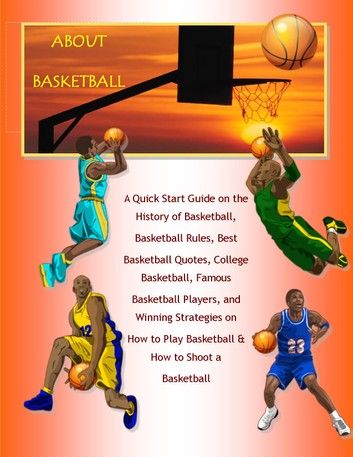 When a player intercepts the ball, he must take it out of the line of long-range shots, and only then start the attack. In the case of a “dead ball” (when the game projectile enters the basket or goes out of bounds), the attacking player takes it out of the zone of long-range throws and gives it to the opponent standing opposite, and he must return the ball to the attacker, after which a new attack begins.
When a player intercepts the ball, he must take it out of the line of long-range shots, and only then start the attack. In the case of a “dead ball” (when the game projectile enters the basket or goes out of bounds), the attacking player takes it out of the zone of long-range throws and gives it to the opponent standing opposite, and he must return the ball to the attacker, after which a new attack begins.
That's the whole point of the game, it's just a miniature version of basketball, which has its own characteristics.
Streetball: the rules of the game in points briefly and clearly
And now all the important points of the game in the form of abstracts:
- The game takes place on one half of the basketball court.
- Both sides attack the same ring.
- The game ball is borrowed from basketball (size 6, 7).
- 2 teams of 3 people from each side take part.
- A match lasts 10 minutes (with time stops) or up to 21 points.
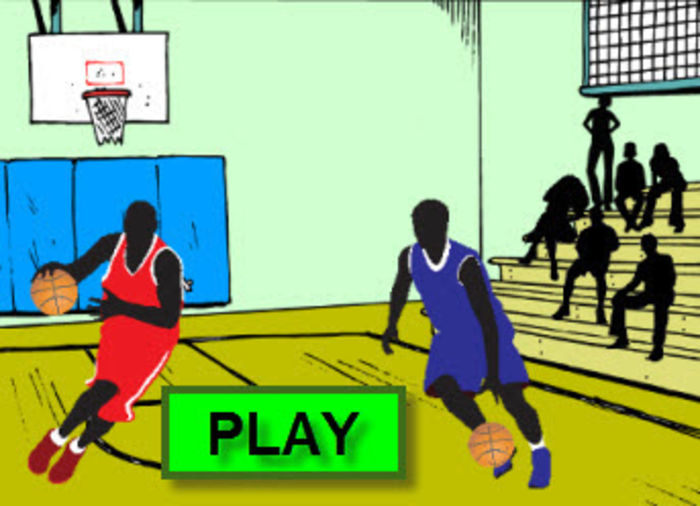
- Overtime up to two goals scored by the first team.
- Each team is only allowed one 30 second time-out per match.
- 12 seconds to attack.
- A goal scored from behind the long-range line is worth 2 points, otherwise 1 point.
- Players are allowed to change an unlimited number of times.
- The game has a rule of running, double dribbling, two steps.
- If the ball is lost or intercepted by a defender, the ball must first be brought out of the three-point zone before starting to storm the ring.
- A streetball match is served by up to 3 referees (2 main referees, 1 secretary controls the time).
- For each subsequent team foul, starting from the 7th, 1 free throw is awarded. 2 free throws are awarded when a player is fouled about to take a 2-point long throw.
- A streetball player who has received 4 personal fouls leaves the field.
- If the ball hits the basket at the time of the violation of the rules on the player who made the throw, a point is counted plus a free throw (s) is awarded.
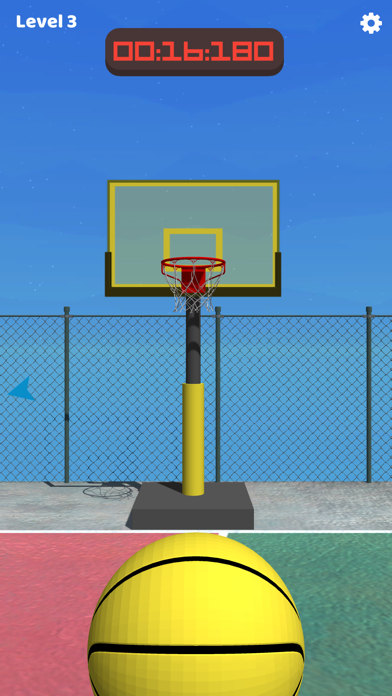
Basketball rules are strictly standardized, but not everything is so simple in streetball. Each court has its own small differences in the rules, for example, they play not only 3 on 3, but also 2 on 2 or 4:4, even one against one. For example, in many schools the playground is not of standard size, but more often than half of a volleyball field 9:9 meters. For schoolchildren, this is not scary, even competitions are held, there is nothing illegal here, everything is done by agreement.
Victories in streetball fights are most often achieved thanks to the excellent physical and technical characteristics of team members who are able to demonstrate their skills in any, even the most difficult situation. But even a physically weak team is able to defeat the strongest, thanks to unique tactics, for example, home preparations in the form of variable combinations or accurate long-range shots.
Interestingly, many matches in Streeball are accompanied by music, mostly hip-hop.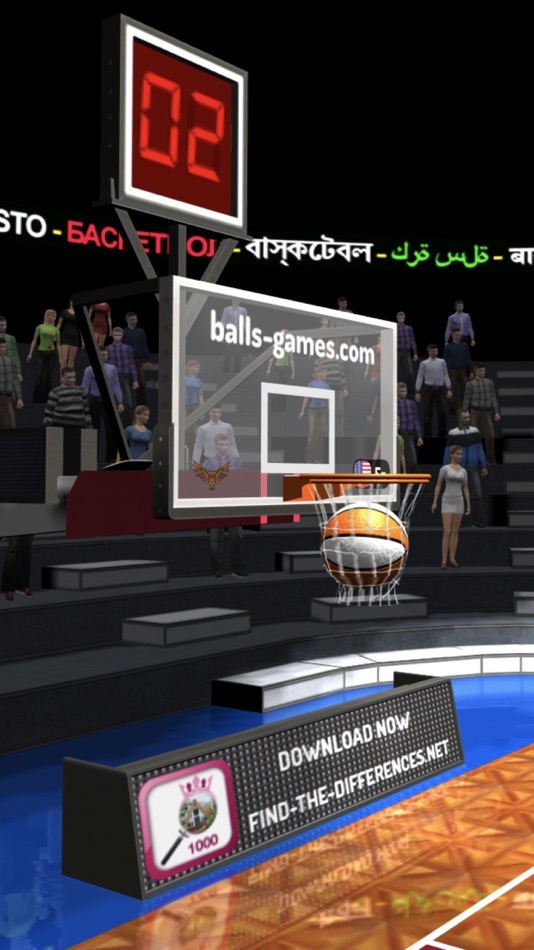
The main differences between streetball and basketball
Basketball has a rich history, it was invented at the end of the 19th century at that time streetball was quite a young sport. There is a difference between these team sports, especially in some moments.
First of all, this is the court and the number of players on it. The standard size of the field in basketball is 28 by 15 meters, while streetball only needs half the court - 15 by 14 meters. According to the number of players, in basketball 5:5, and in streetball 3:3.
Points are also awarded differently. In basketball, 3 points are awarded for a long-range 3-pointer, 2 for a hit in the zone, 1 for a free throw. In streetball, 2 points for a long-range hit and 1 for all others.
These sports can be compared for a long time, here the time to attack is different and there are nuances in terms of fouls, in general there are a lot of things to understand and compare.